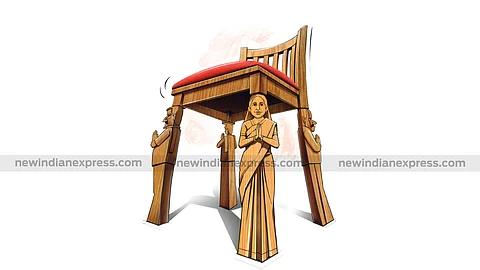

In the battleground of the world’s largest democracy, Odisha rarely figures among the states for having a decibel-shattering election process. But it surely makes the right noise where it matters. With the eastern state going to the assembly poll at the same time as the Lok Sabha one, most political parties have shown a remarkable spark in nominating more women as candidates without waiting for the implementation of the women’s reservation bill. Odisha has 21 Lok Sabha seats and a 147-member assembly. The ruling Biju Janata Dal, which has been batting for one-third reservation for women in parliament and states legislatures, has once again taken the lead.
This time, it has nominated seven women to Lok Sabha seats. BJD supremo Naveen Patnaik, who had nominated seven women candidates in 2019 too, is walking the talk of fielding women to a third of the seats. The BJP has fielded four, while the Congress nominated three women candidates. In the 17th Lok Sabha, 42 percent of the BJD members were women, the highest among parties with 10 members or more. For the assembly, the BJD had fielded 20 women the last time, which has significantly grown to 34 this time. The BJP has fielded 20, while the Congress has nominated 21 women candidates so far.
A deeper analysis would also reveal that many of the women candidates are related to lawmakers and may have been picked for reasons such as anti-incumbency, voter familiarity and even shortage of candidates at some places. Apart from the charges of nepotism and dynastic politics, the intent to nominate more women to legislatures must be appreciated without hesitance. In Odisha, women’s representation in the assembly had dipped in the 1990s. In 1990 and 1995, the state legislature just had nine and 10 women members. It rose to 14 in 2000 and fell again. The 16th state assembly, with 18 women lawmakers or 12 percent of the total, was behind five other states in terms of the share.
India has already passed the historic legislation for one-third reservation for women. But proportional representation in lawmaking bodies should be the goal if we are truly looking to bridge the gender gap. With all major parties choosing to nominate more women candidates, Odisha could well lead the way.